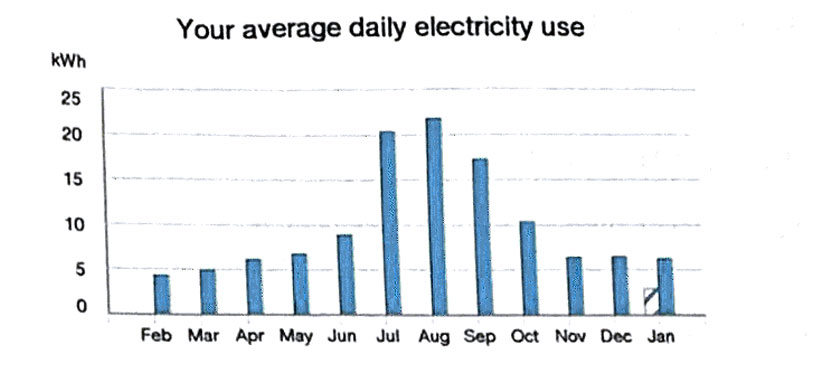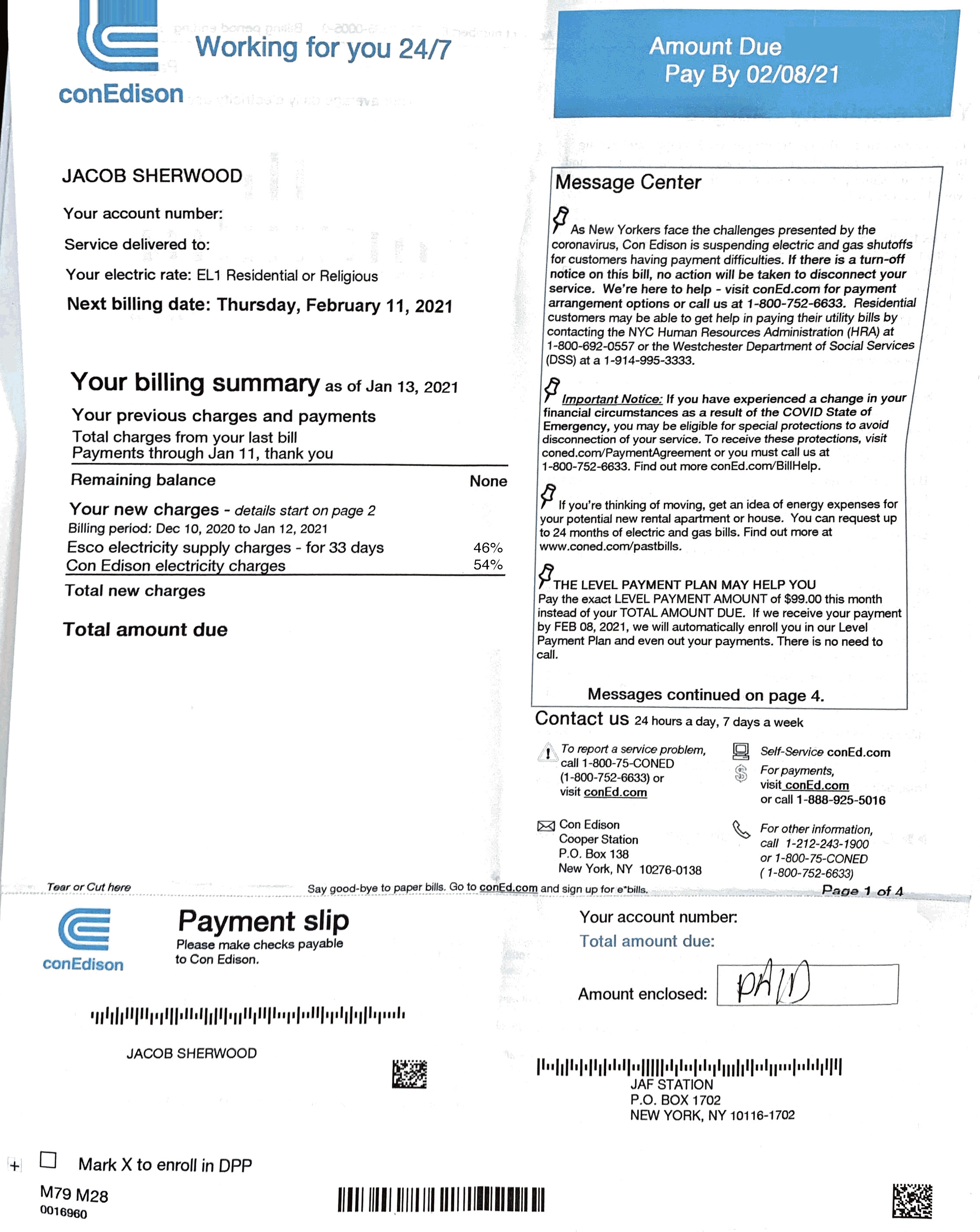Energy Utility Use
27 Feb 2021 - Jake Sherwood
 Daily Average Electricity
Daily Average Electricity
Energy Utility Use
ConEd
We were tasked to find an example of energy we pay for. Luckily for me I had a recent ConEd bill staring at me from the mess on my desk.
For the period of Dec ‘20 to Jan ‘21, we used ≈ 210kWh or about 6.77 kWh per day. Which is a bit higher than what I used for the same period the previous year. We were out of town for a good part of Jan ‘20 so it may not be a good comparison. Also worth noting the noticeable increase in the summer months. Gotta use that AC less…
But overall that seems pretty low compared to the national average (from 2017) of 28.9 kWh per day. Of course that is for a much larger house than my closet disguised as an apartment.
The article I got that stat from had a lot of other great info regarding the kilowatt-hour.
 ConEd bill 2/2021 front
ConEd bill 2/2021 front ConEd bill 2/2021 back
ConEd bill 2/2021 back
A couple things from my bill I wanted to explore further were the “EL1 Residential or Religious” categorization and my “green energy provider” Green Mountain Energy, which makes up 46% of my bill and is supposed to provide percentage of my electricity from “green” or “renewable” sources.
So what is the EL1 classification and what exactly am I getting from Green Mountain Energy?
EL1 Residential or Religious
My bill has my apartment classified as EL1 Residential. What does that mean?
According to a few sources, EL1 is just my “class rate.” And apparently about 85% of ConEd’s customers are on this rate. There are a number of other classes, including small non-residential service and then a tiered group of demand billed services.
It is interesting to note that residential and small non-residential classes are deamed “Energy Supply”, and is billed per kWh, while Demand Supply classes are billed per kilowatt (“kW”).
So nothing too exciting there, but I did find this interesting quote to help me conceptualize what 1kWh is. This article references a book by Phillip F. Schewe, ‘The Grid,’’ and states one kilowatt hour takes about a pound of coal to produce. Which is enough energy to run a large air-conditioner for an hour, wash 200 pounds of laundry or mill 300 pounds of grain.
Green Mountain Energy
Upon logging into my Green Mountain Energy account they tell me, I’ve “avoided” over 2096 pounds of CO2 in the last 12 months.
Sounds great, but how?
When I first moved back to New York for ITP, my family I were at the local Farmer’s Market and I was approached by a representative of Green Mountain Energy. Usually skeptical of these types of approaches, the idea of getting at least part of our power from green sources was appealing. After an easy signup process I left somewhat fulfilled knowing that I was at least attempting to use renewable sources.
According to this article there are a number of energy service companies, or ESCOs in the New York area, 150 to be exact. And as the article explains it’s often hard to ascertain exactly what they are doing.
So what really was GME doing?
To my detriment, I never fully looked into what was going on, but was content in knowing or at least thinking I was being more environmentally conscious.
Unfortunately it doesn’t quite look to be as advertised. Basically I’m not necessarily getting green energy, but more renewable energy credits. Essentially offsetting the none-green energy sources I’m getting through GME.
So is the premium I’m paying to GME worth it? I’m not quite sure. On one hand I’m a little PO’d that I was lied to. On the other I am still helping renewable sources even though my energy might not directly be coming from them.
I’ve also reached out to customer support to try to confirm what exactly is going on.
I guess moral of the story is never believe a salesperson, and verify, don’t trust.
